 Sámegillii
Sámegillii  På norsk
På norskArticles about Sami school history
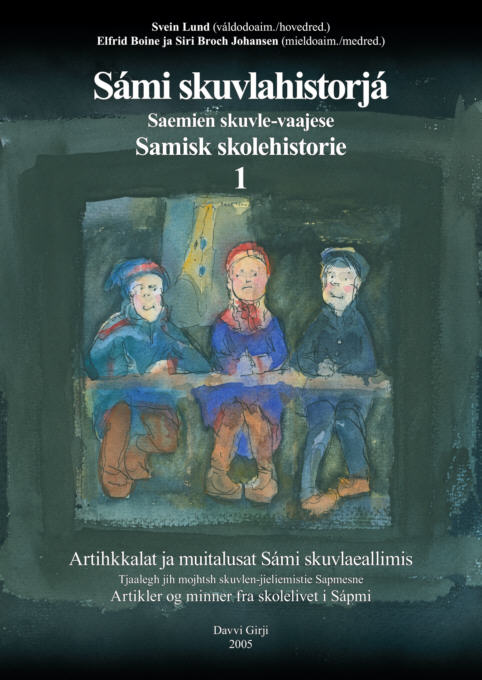 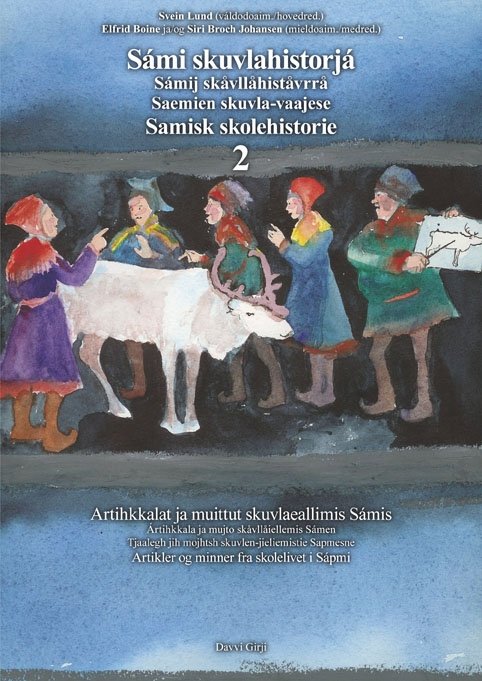 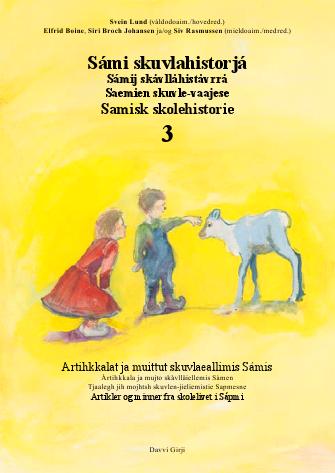 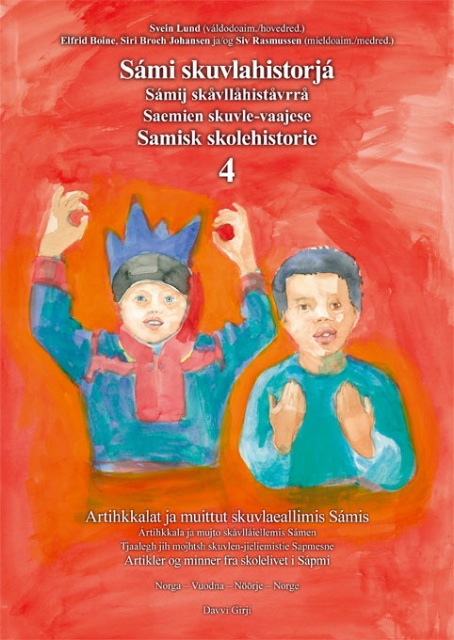 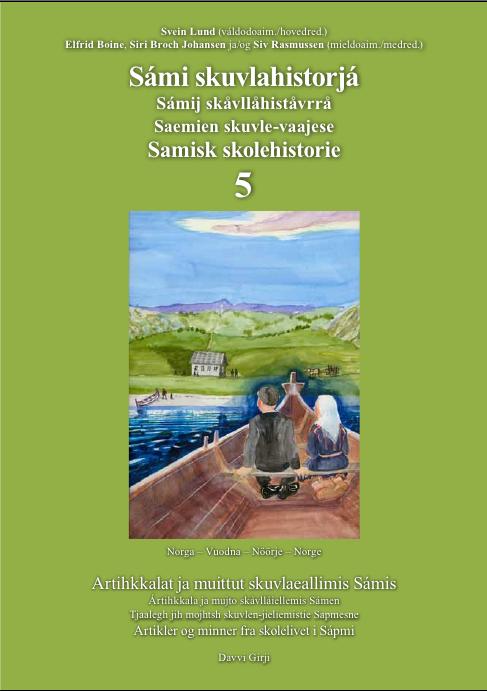
Do you know Sami school history?Sámi skuvlahistorjá / Samisk skolehistorie (Sami School History) is a series of books published by the publishing house Davvi Girji. In about 200 articles in 5 volumes there is told about the experiences of Sami children in Norwegian schools, and about the changes in the educational politics of the Norwegian authorities towards the Sami population. The books are published with parallell text in Sami and Norwegian language.In this web site some of the articles of the first book are also published in English. It would be too much to translate it all, so to make this history available to a greater public, we are translating a series of newspaper articles, which sorted by topics make a summary of stories in the books. So far there are 28 articles published in Sami language by the Sami newspapers Min Áigi and Ávvir. They are also published here in Norwegian and the English version will be published gradually as they are translated. These articles are edited by the main editor, Svein Lund. Besides him the editing board of the book series consist of Elfrid Boine, Siri Broch Johansen and Siv Rasmussen. |
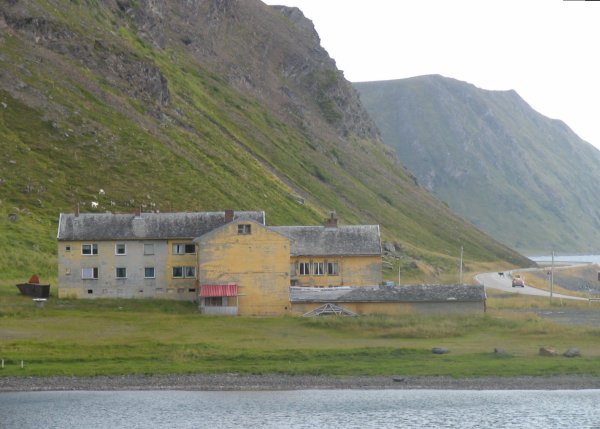 | 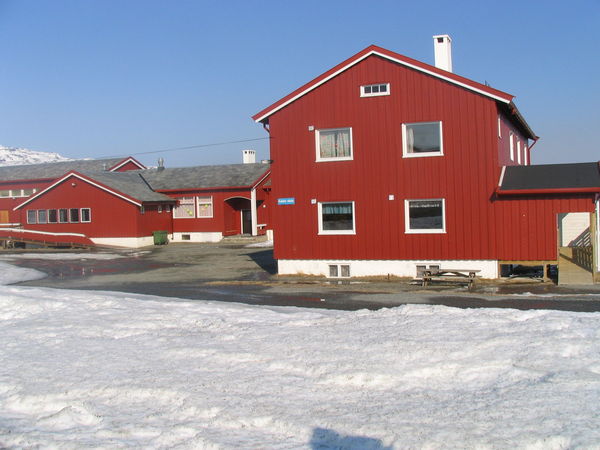 |
| Sarnes boarding school has been closed down for a long time and is now only falling to ruin, but it remains a monument representing the school history at Magerøya. (Photo: Svein Lund) | Kokelv school, 2007. The school was built in the 1950’s. (Photo: Svein Lund) |
In school we never learned anything about ourselves. Only geography mentioned the Sami working with reindeer-husbandry in the plains of Finnmark. On the other hand they provided extensive information about Oslo, so that the first time I came to Oslo it felt as if I knew the city already. We learned about a completely different life than the one we lived. The entire school was built up around the idea that we should look up to what was far away.
We learned to be ashamed of not being who we were supposed to be. I remember that the children never told the others how things were back home. Only those who came from wealthier families told the others that they had wardrobes, like those we had in the dormitories. I told them that we did not have wardrobes, but rather «spedstálle». The others did not understand what it was, as it was our Sami adaption of the word «pedestal». We had two such wardrobes that someone from the south had sent us after the war, alongside some other furniture.
My oldest brother told me that he was prohibited to talk Sami in school. I have never experienced such a pronounced prohibition myself. I cannot say that I experienced direct infringement. It was always of a more indirect character in that one as a child had to distance oneself from family. Nothing was ever put direct into words, but the message was still clear enough: what belonged to us was worthless. …
The school distanced us frm our kind. The text book in geography contained information about badjeolbmot (reindeer herding Samis), where they lived, what they did for a living, and if their relocation to and fro the winter place, or was it to the summer place. It felt like they were somehow wrapped up in an exotic mist that I did not feel familiar with.
I searched the other pages, and tried to read between the lines about the badjeolbmot’s summer place. There wasn’t one word about us, or the fact that there were people living along the coast and on the islands who were also Sami. And I waited for the teachers, but not even they said anything, and they should know. They knew us. They knew about our kind from the plains, and in the same mystic mist they would talk about it.
Where were we? Didn’t we exist? Were there only Nomadic Sami and no other Sami? Were we only fishermen, smallholders, carpenters, industrial workers and construction workers? Were there no difference or did they try to hide and suppress something I certainly knew to be different? The days in school outnumbered the days at home so one seldom had an opportunity to get answers.
(Ingunn Utsi's story, SSH-2)
- ... That’s just the way it was. All the teachers spoke Norwegian and were looked up to. We never heard that what we learned at home was a kind of learning. Home was home and school was school. When I got up in the morning, I traveled from planet Home to planet School. The spacecraft in which we traveled did not have room for anyone but children. Only one adult: the driver. My spacecraft was the school bus. It transported us between the planets. The parents and teachers never talked together. The teachers only told the parents whether we knew Norwegian or not. I was a quick learner and managed in Norwegian. Sami became a domestic language that stagnated at the level of a 7-year-old. I did not dare to skip school either, because my mother could not read nor write neither Norwegian nor Sami, not even enough for her to write me a note to school. I learned to be ashamed....
(Solbjørg Ravna's story, SSH-2)
– My life has always been fishery, and I cannot say that I have learned anything in school that has proved to be useful in my working life. Nothing. I had to gain the knowledge I needed from older people.
(Bjørn Mathisen's story, SSH-3)
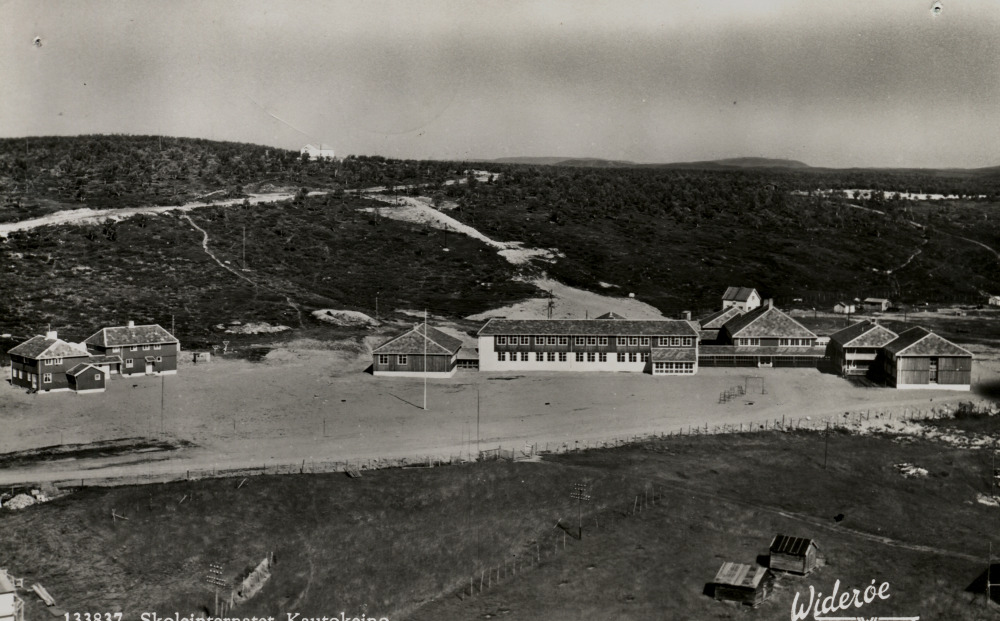 | The new school and dormitories in Kautokeino – straight after its completion towards the end of the 1950’s. (postcard) |
Back then there were a different pedagogy than nowadays. There were seldom oral activities in the classroom. We tended to learn expressions by heart. The oral tradition of story-telling, which had been extremely valuable to me as a child, was not made use of in the school.
When we came to the classes there were such a monotone voice. We had to copy what the teacher wrote on the blackboard. In the beginning we did not understand that much, and even after we had begun to understand, we had a strange feeling that this did not concern us. We did not know the life described in the books. We did not have any point of reference to what the teacher taught, as it was another world. We did not care either, as it did not concern us as human beings. In the morning and evening we had to sing. It was always from the same book. I do no recall its name, but it was something along the lines of the Norwegian school’s songbook. We would stand up and sing. Everything was in Norwegian, including the psalms. Today I cannot recall a single psalm or song that we would sing.
To us, the most important things happened outside school hours. The school was an enormous building, and it was completed only a few years before I began. I think that this great building affected both pupils and teachers. It was as if a new era had begun, with even more Norwegian assimilation.
(Klemet I. Hætta’s story, SSH5)
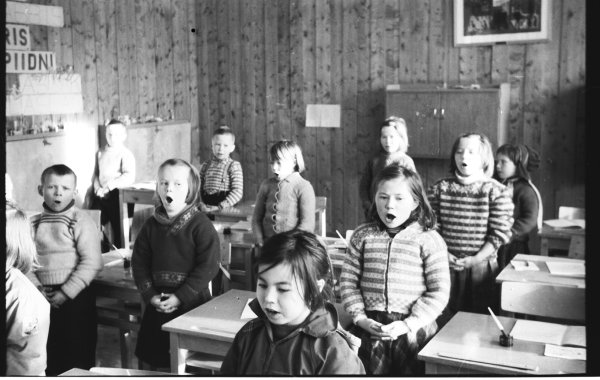 | From Grensen school, 1959/60. (Photo: Åse Frøysadal) |
The children’s previous experience is considerably small when they begin in first grade. It is even possible to say that they have minimal knowledge about the world outside the domestic sphere. Their world consists of their parents, siblings and neighbours. Most of them might have had a trip to the Church village, but cars, buses, trolly cars, trains and airplanes, larger buildings, cinemas and theatres are all more or less surreal terms for these children. Compared to other 7-year-olds their mother tongue vocabulary is considerably small. It is slightly better for the Sami children who live at the Church village, but the linguistic foundation is weak even among them.
The families tend to have many children, and this probably leads to less time, if any, to answer all the “where” and “why” from the children. The child’s need to ask questions may decline after a while. One should also keep in mind that the radio does not constitute a contribution to Sami children. Everything is incomprehensible to them. The brightest might pick up a few words in relation to the weather forecast and the news, - words that are repeated several times daily. Barnetimen [“children’s hour”- a daily radio programme] is incomprehensible to them a long time after they start school. To summarise: when they start school, the children do not tend to bring with them any other experience than that of the domestic life, which in itself does not need to be of small value. Where the domestic environment is poor, the children will have a poor foundation when they begin in first grade.
The first days are spent showing the first graders around the school and the dormitories. Everything is new. What is chalk? What is a sponge? What is a water closet? What is a shower? – Everything needs to be displayed and explained. Most of them have never seen such things before.
(Kari Meløy’s story, SSH-1)
Here you find all the articles in the series:
28.09.2007 Why Sami school history?
05.10.2007 Boundless ignorance
12.10.2007 Southerner-teachers encounter the Sami language
19.10.2007 The start of Sami beginner instruction
26.10.2007 The start of education in reindeer-herding
02.11.2007 From Sami to Norwegian vocational training
16.11.2007 Struggle for Sami gymnasium
28.11.2007 School experiences of Norwegian speaking Samis
14.12.2007 Resistence against Sami language and culture
25.01.2008 A strange world
23.05.2009 On Sami teachers
30.05.2009 Life in boarding school
06.06.2009 Sami pupils were bullied
13.06.2009 Sami content in the teaching
20.06.2009 Pupil as interpreter
04.07.2009 How the children quit speaking Sami
10.09.2010 God does not understand Sami
08.10.2010 The point of view of the Norwegianizers
13.10.2010 Men of the church defending the Sami language
02.12.2010 Sami teachers in old times
09.12.2010 Boarding school life in old times
18.12.2010 Sami pupils in special schools
14.01.2012 The parents' struggle for Sami education
21.01.2012 Reluctance and absence
28.01.2012 The school during the war
04.02.2012 Reconstruction and barrack schools
11.02.2012 Curriculums - for Norwegianization and for Sami school
18.02.2012 The great struggle of the curriculum
Sami school history 1
Sami school history 2
Sami school history 3
Sami school history 4
Sami school history 5
Sami school history - main page